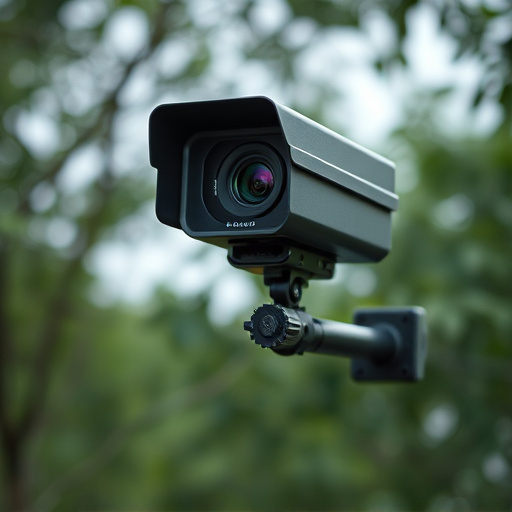Hidden camera networks are crucial tools for enhancing safety in elderly care settings, offering discreet surveillance without compromising privacy or dignity. When choosing these cameras, prioritize features like HD video, night vision, motion detection, wireless connectivity, and durable construction. Installation must adhere to legal and ethical guidelines, with security measures including encrypted connections, strong access points, regular firmware updates, and unique passwords. These systems should be employed as a last resort after exhausting other safety measures, prioritizing residents' privacy and peace of mind for families.
“Uncovering the intricacies of covert camera networks, this article delves into their pivotal role in elderly care. We explore why these systems are becoming essential tools for ensuring safety and well-being. From selecting the optimal Best Hidden Cameras for Elderly Care (considering key features like infrared technology and motion sensors) to navigating ethical and legal landscapes, we provide a comprehensive guide. Additionally, we offer practical best practices for setting up and maintaining secure network infrastructure.”
- Understanding the Importance of Covert Camera Networks in Elderly Care
- Choosing the Best Hidden Cameras: Key Features and Considerations
- Ethical and Legal Aspects of Installing Covert Cameras
- Best Practices for Setting Up and Maintaining a Secure Network
Understanding the Importance of Covert Camera Networks in Elderly Care
Covert camera networks play a pivotal role in ensuring safety and well-being in elderly care settings. With advancements in technology, best hidden cameras for elderly care have become more sophisticated, offering discreet surveillance solutions tailored to this specific domain. These cameras are designed to operate with minimal disruption, allowing caregivers and families to monitor the activities and environment of older adults while maintaining their privacy and dignity.
The importance lies in preventing potential risks and abuse, ensuring timely intervention should any issues arise. By employing covert camera networks, care facilities can maintain a safe and supportive environment, promote independent living, and provide peace of mind for both residents and their loved ones. This technology is particularly crucial in addressing concerns related to dementia patients who may wander or require constant supervision without compromising their comfort and freedom.
Choosing the Best Hidden Cameras: Key Features and Considerations
When selecting hidden cameras for elderly care, consider devices designed with discretion and quality in mind. The best hidden cameras for this purpose often feature small, sleek designs that blend seamlessly into their surroundings—wall plugs, smoke detectors, or even books are popular choices. Look for high-definition video resolution to ensure clear images and detailed insights. Night vision capabilities and motion detection are also crucial features for capturing activities at all times of the day and night.
Additional considerations include wireless connectivity for easy setup and remote access, a long battery life, and durable construction suitable for various environments. Some models offer cloud storage options for secure data backup, while others come with local memory cards. Ensure compatibility with your monitoring system or app to streamline surveillance and caregiving processes.
Ethical and Legal Aspects of Installing Covert Cameras
When considering the installation of covert camera networks, it’s crucial to navigate a complex web of ethical and legal considerations, especially when it comes to best hidden cameras for elderly care. These installations, meant to ensure safety and well-being, must balance privacy rights with their intended purpose. Laws regarding surveillance vary by region, making it essential to thoroughly understand local regulations before deploying any camera system.
For instance, many jurisdictions have strict rules about the placement of cameras and consent requirements. Installing hidden cameras without proper authorization can lead to severe legal repercussions. Additionally, ethical guidelines dictate that the use of covert cameras should be a last resort, only employed when other means of monitoring cannot guarantee the safety of vulnerable individuals, such as the elderly. Privacy is a fundamental right, and its protection must be at the forefront of any decision to install hidden cameras.
Best Practices for Setting Up and Maintaining a Secure Network
When setting up a covert camera network, especially for elderly care, security is paramount. Start by selecting a reliable and secure network infrastructure. Use encrypted connections and strong access points to prevent unauthorized access. Implement firewall protections and regularly update firmware to patch security vulnerabilities. Ensure all devices are properly configured with unique, complex passwords.
For best results with best hidden cameras for elderly care, create a well-designed network layout. Strategically place cameras in key areas while adhering to privacy regulations. Regularly monitor network activity and keep logs of access. Keep the system updated with the latest security patches and software to maintain a robust defense against cyber threats.
When implementing covert camera networks in elderly care, it’s essential to balance security with respect for privacy. By selecting the best hidden cameras with advanced features like motion detection and clear resolution, adhering to ethical and legal guidelines, and following best practices for setup and maintenance, caregivers can ensure a safe and comfortable environment for seniors while maintaining their dignity. Choosing the right technology, combined with stringent network security, enables a more attentive and responsive approach to elderly care.
